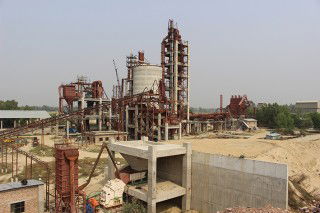The International Energy Agency (IEA) has released a net-zero by 2050 roadmap. The IEA believes the world has a viable pathway to building a global energy sector with net-zero greenhouse gas emissions in 2050, but it is narrow and requires immediate action across all countries to begin an unprecedented transformation of how energy is produced, transported and used worldwide, according to the agency’s new landmark report.
'Net-Zero by 2050: A Roadmap for the global energy sector' is the world's first comprehensive study to lay out a cost-effective transition to a net-zero energy system while ensuring stable and affordable energy supplies, providing universal energy access, and enabling robust economic growth.
"Our Roadmap shows the priority actions that are needed today to ensure the opportunity of net-zero emissions by 2050 – narrow but still achievable – is not lost. The scale and speed of the efforts demanded by this critical and formidable goal – our best chance of tackling climate change and limiting global warming to 1.5°C – make this perhaps the greatest challenge humankind has ever faced," said Fatih Birol, the IEA's executive director.
Some of the key insights from the report include:
• Climate pledges by governments to date – even if fully achieved – are well short of what’s required to bring global energy-related carbon dioxide emissions to net zero by 2050.
• The IEA's pathway requires the immediate and massive deployment of all available clean and efficient energy technologies. That includes annual additions of solar PV to reaching 630GW by 2030, and those of wind power reaching 390GW. Together, that's four times the record level set in 2020.
• Most of the global reductions in CO2 emissions between now and 2030 in the IEA’s net-zero pathway come from technologies already on the market today. But in 2050 almost half the reductions come from technologies that are currently only at the demonstration or prototype phase. This calls for major innovation progress this decade.
• Total annual energy investment surges to U$5trn by 2030 in our pathway, creating millions of clean energy jobs and putting global GDP four per cent higher in 2030 than it would reach based on current trends.
• In the pathway no investment in new fossil fuel supply projects is needed, nor is further investment for new unabated coal plants, and sales of new internal combustion engine passenger cars are halted by 2035.
• By 2050 global energy demand is eight per cent smaller than today but serves an economy twice as big and a population with 2bn more people. And almost 90 per cent of electricity generation comes from renewable sources.
• Energy security evolves on the path to net zero. Electricity system flexibility, cyber security, and reliable supplies of critical minerals all become more and more important.

Supreme court orders relocation of cement and other industries
Nepal’s Supreme Court has ordered the relocation of industries surrounding Lumbini, the birthpla...